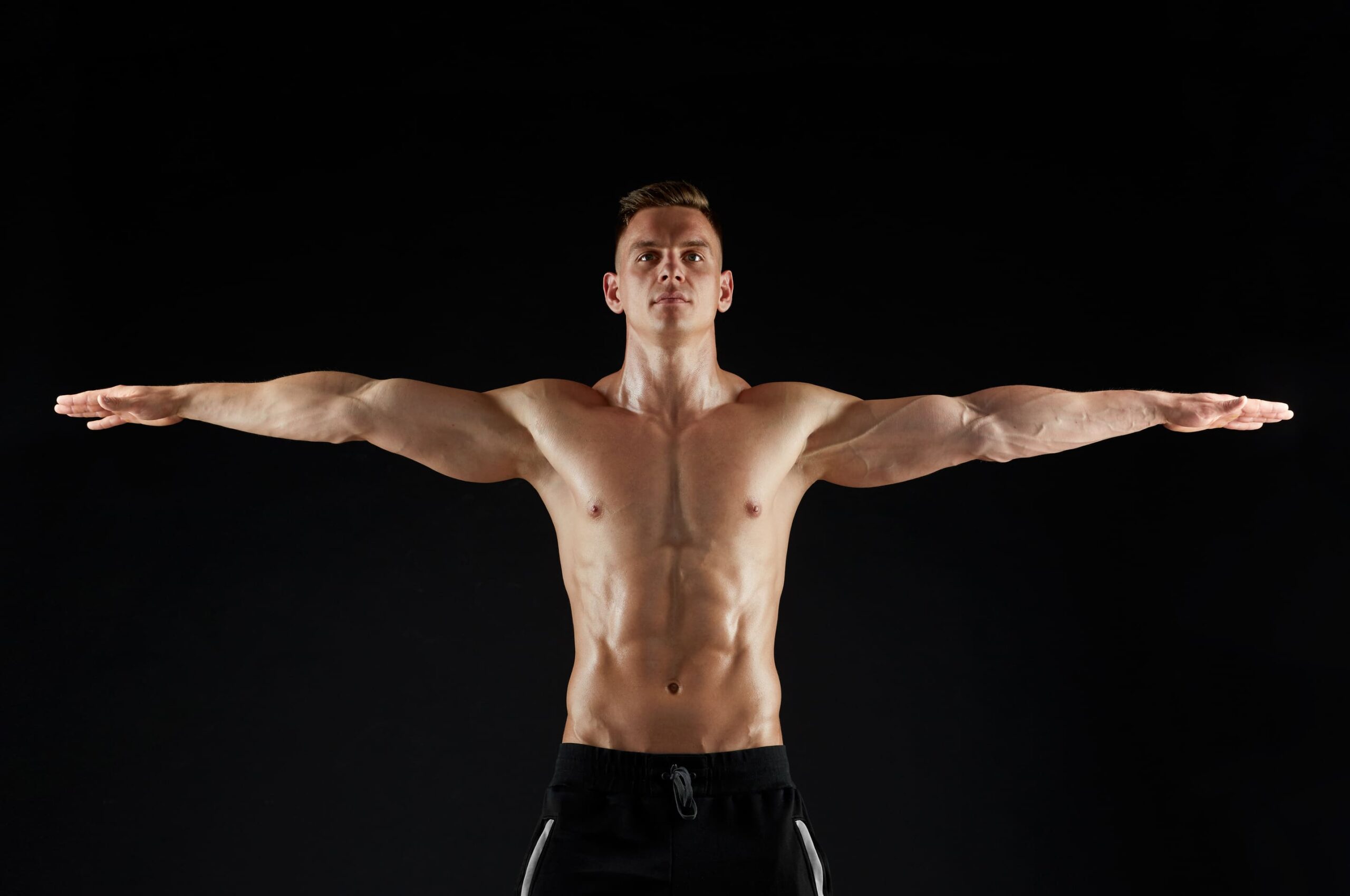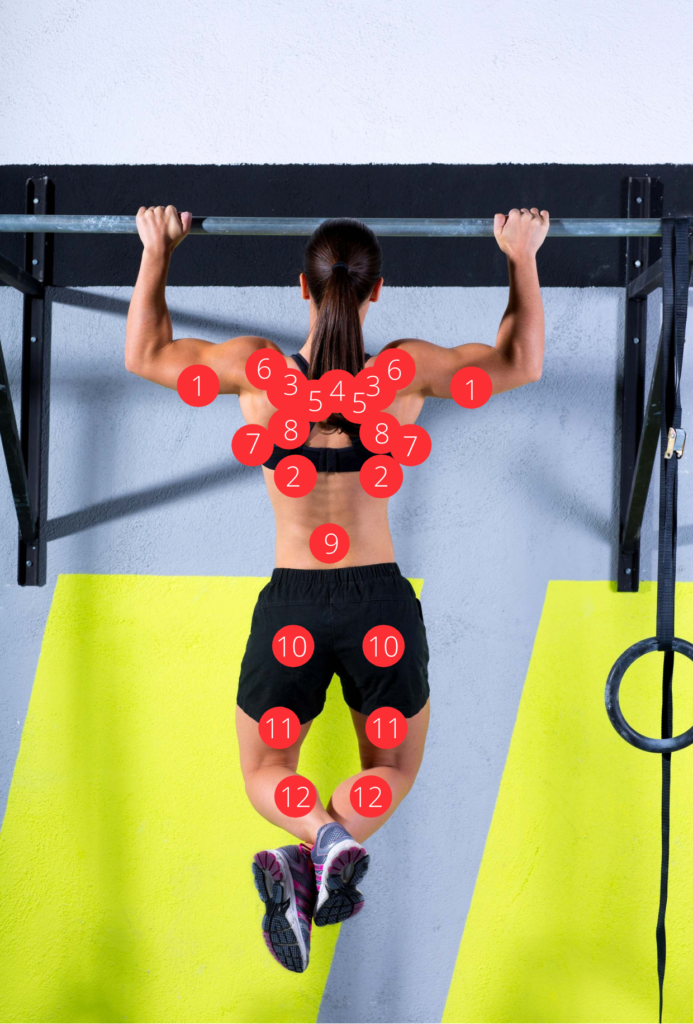Your most important muscles at a glance

Your body has 639 muscles. They ensure that your organism functions smoothly. Without them, you would not be able to survive. Like a motor, they convert energy into movement. Here is an overview of the most important muscles:
How our muscles work
Muscles organize a kind of microscopic tug-of-war and consume chemical energy in the process. This is a refined mixture of creatine phosphate, glucose, glycols, lactate, fatty acids, and triglycerides. A few of these fuels are stored in muscle and released when needed. Others are supplied fresh through the bloodstream. Some are converted without oxygen into adenosine triphosphate (ATP), the universal energy source of human life. Several burn completely to carbon dioxide and water.
Why muscles are so important
A sporty athletic figure is a real eye-catcher for women and for men. But of course, it is not primarily about attractiveness. Our ancestors needed the muscles to be able to move quickly and defend themselves. Although this is no longer necessary today, there are still good reasons to keep them strong and healthy:
- Regular strength training is good and important for our musculoskeletal and postural system.
- In addition to the muscles, it also strengthens ligaments, tendons and cartilage.
- This is the only way to support joints and the spine, prevent joint and postural damage and injuries to the musculoskeletal system.
- Regular strength training is able to counteract the age-related loss of muscle mass from the age of 30 onwards.
- In addition, muscle cells burn a lot of fat and are therefore absolutely essential on the way to your desired weight.
The most important muscles of the front of the body

1: Straight abdominal muscles (Musculus rectus abdominis)
2: oblique abdominal muscles (Musculus obliquus externus abdominis)
3: Four-headed thigh extensor (Musculus quadriceps femoris)
4: Zweiköpfiger Oberarmmuskel (Musculus biceps brachii)
5: large pectoral muscle (Musculus pectoralis major)
What the important front muscles are good for
1: Straight abdominal muscles (Musculus rectus abdominis): Probably the most important muscle for good posture. Also supports the back muscles.
2: oblique abdominal muscles (Musculus obliquus externus abdominis): Also very important for a good posture and for the stability of the spine.
3: Musculus quadriceps femoris: The most important muscle for walking and running.
4: Zweiköpfiger Oberarmmuskel (Musculus biceps brachii): Wir brauchen ihn zum Beugen des Ellenbogens sowie zum Ziegen und Anheben.
5: großer Brustmuskel (Musculus pectoralis major): Er verleiht dem oberen Brustbereich seine Form und hilft dabei, wenn etwas weggedrückt werden soll.
The most important muscles of the back of the body

1: Three headed arm extensor (Musculus triceps brachii)
2: Sub-bone muscle (Musculus infraspinatus)
3: Upper bone muscle (Musculus supraspinatus)
4: Trapezius muscle (Musculus trapezius)
5: Rhomboid muscle (Musculus rhomboideus)
6: Delta muscle (Musculus deltoideus)

7: Small dorsal muscle (Musculus peres minor)
8: Latissimus (Musculus latissimus dorsi)
9: Back extensors (Musculus erector spinae)
10: Gluteus maximus muscle
11: Bilateral thigh muscle (Musculus biceps femoris)
12: Twin calf muscle (Musculus gastrocnemius)
What the important muscles of the back are good for
1: Three-headed arm extensor (Musculus triceps brachii): We need it to be able to push something away. It also gives contour to the upper arm.
2: Sub-bone muscle (Musculus infraspinatus): Necessary for the external rotation of the shoulder joint.
3: Upper bone muscle (Musculus supraspinatus): We also need this muscle for the external rotation of the shoulder joint.
4: Trapezius muscle (Musculus trapezius): Important for good posture and for carrying bags and suitcases.
5: Rhomboid muscle (Musculus rhomboideus): Also extremely important for posture.
6: Delta muscle (Musculus deltoideus): Stabilizes the shoulder joint.
7: Small dorsal muscle (Musculus peres minor): Dient der Außendrehung der Schulter.
8: Broad diamond muscle (Musculus latissimus dorsi): Provides a V-shaped back and is essential for pulling movements, for example when swimming.
9: Back extensors (Musculus erector spinae): Stützt die Wirbelsäule vor allem im Lendenwirbelbereich.
10: Musculus gluteus maximus: Essential for locomotion and good posture. Ensures a firm buttocks.
11: Bilateral thigh muscle (Musculus biceps femoris): Bends the leg and helps with the external rotation of the knee joint.
12: Twin calf muscle (Musculus gastrocnemius): Important for running and jumping and for standing on your toes.